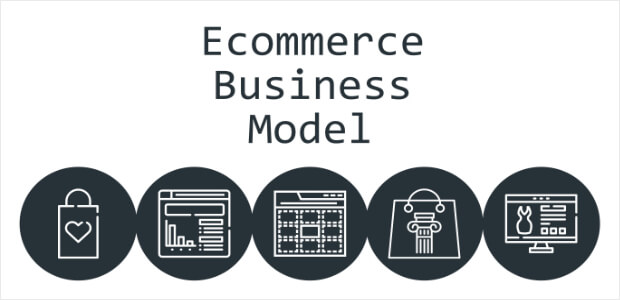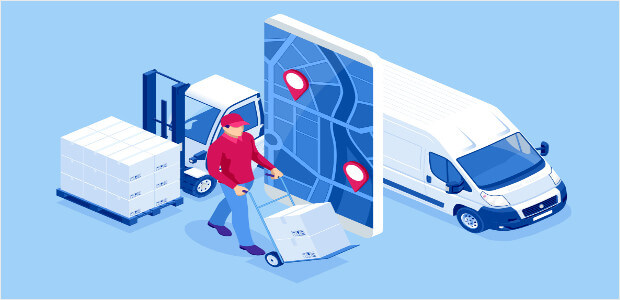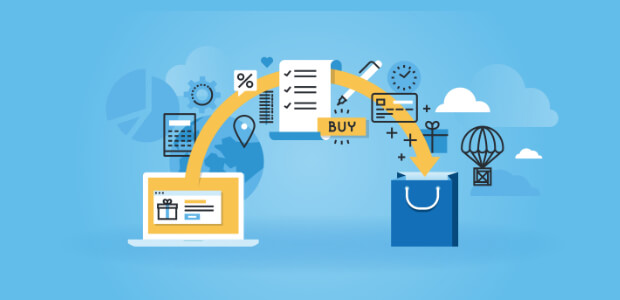Do you want to start your eCommerce business but are not sure about the types of eCommerce business models available and which one to use?
You need to figure out what business model suits you best, whether you’re just starting to explore eCommerce or already have an eCommerce business that needs to stand out among competitors.
However, with so many different types of eCommerce available, sometimes it can be overwhelming to decide which is the best fit for your goals and resources.
In this article, we will discuss the six most common types of eCommerce business models, including some revenue models you can use to start your business. By the end of this article, you will have a better understanding of which eCommerce business model works well for you and your business.
We’ll discuss the following topics in this post:
- What is an eCommerce Business Model?
- 6 Most Popular Types of eCommerce Business Models
- Top 6 Innovative Value Delivery Frameworks for Your eCommerce Business
- How to Choose the Right eCommerce Business Model?
- Increase Customer Trust and Sales of Your eCommerce Store
Let’s start with what an eCommerce business model actually is.
What is an eCommerce Business Model?

In the last two decades, the widespread use of eCommerce platforms has contributed to significant growth in online retail. In fact, according to a study, eCommerce sales in the United States alone reached $1.03 trillion in 2022, passing $1 trillion for the first time ever.
An eCommerce business model refers to how a business operates and generates revenue by selling products or services online.
It includes various elements such as having an online presence (a website), marketing strategies, payment methods, supply chain, and customer service.
Typically, the process goes like this:
- A business creates its website where customers can easily browse and purchase products or services. They can either source these products directly from manufacturers or suppliers or create their own products.
- In order to attract customers, they use various marketing techniques such as social media ads, email marketing campaigns, and search engine optimization.
- They also offer multiple payment options like credit card or digital wallet payments to make the purchase process smooth for customers.
- Once a customer places an order, the company takes care of everything else. They manage inventory levels, coordinate with suppliers, and ensure that the order is delivered to the customer on time.
All this makes shopping online an effortless customer experience and helps businesses build a loyal customer base. But, most importantly, it allows companies to reach a more extensive customer base and operate with lower overhead costs than traditional physical stores.
For more detailed information, check out our Ultimate Guide to eCommerce.
6 Most Popular Types of eCommerce Business Models

Choosing the appropriate eCommerce business model is critical for the success of an online store.
On the downside, if you don’t analyze your business and understand your target market, you might end up wasting a lot of money.
There are six different types of eCommerce models you can choose from:
- Business-to-Business (B2B)
- Business-to-Consumer (B2C)
- Consumer-to-Consumer (C2C)
- Consumer-to-Business (C2B)
- Business-to-Administration (B2A)
- Consumer-to-Administration (C2A)
Let’s look into each of these business classifications in detail to ensure you’re fully equipped to take your eCommerce game to the next level.
1. Business-to-Business (B2B)
In a Business-to-Business (B2B) eCommerce model, businesses sell products or services to other businesses. This type of eCommerce usually involves larger transactions and long-term relationships between firms.
For example, a software company selling its software to a large corporation, a manufacturer selling its products to a distributor, or a company providing marketing services to other businesses.
One key advantage of the B2B model is that it allows businesses to establish long-term relationships with their clients, leading to repeat business and potentially lower customer acquisition costs. According to the stats, the global B2B eCommerce market is expected to reach over $18 billion by 2027, highlighting the significant role this model plays in the global economy.
However, this model also requires businesses to navigate complex procurement processes and regulations, making it more challenging to enter than other eCommerce models. And on top of that, B2B eCommerce often involves custom solutions and more advanced technology than other models. This is because businesses need to provide specialized products and services to meet their clients’ needs.
2. Business-to-Consumer (B2C)
Business-to-Consumer (B2C) eCommerce model allows businesses to sell products or services directly to their end users. It typically involves smaller transactions and a focus on marketing to individual consumers.
In simpler words:
A business sells products to customers through a website instead of in a physical store. This is the traditional retail model, but online.
This type of eCommerce model is the most common and has grown significantly in recent years. According to a global strategic business report, global B2C eCommerce sales are projected to reach $7.5 Trillion by 2027.
When it comes to purchasing products or services, the decision-making process for a B2C transaction is generally quicker than that of a B2B transaction, especially for lower-priced items. Due to this shorter sales cycle, B2C business owners often spend less on marketing to make a sale. Although, they also have a lower average order value and fewer recurring orders than B2B businesses.
One significant advantage of the B2C model is the ability to sell directly to customers, eliminating the need for intermediaries like distributors or wholesalers. This allows B2C businesses to maintain greater control over their brand and pricing strategies.
However, with numerous businesses competing for customers’ attention, B2C eCommerce can also be highly competitive. Therefore, success in this model often requires a combination of great new products, strong branding, and effective marketing.
Examples of successful B2C eCommerce platforms include Amazon, Walmart, and Target.
Other niche B2C eCommerce companies, like Glossier for skincare products or Warby Parker for eyewear, have built strong brand identities and customer bases through their unique offerings and marketing strategies.
3. Consumer-to-Consumer (C2C)
While the concepts of B2B (business-to-business) and B2C (business-to-consumer) are well-understood, the notion of C2C (consumer-to-consumer) may not be as familiar.
The Consumer-to-Consumer (C2C) eCommerce model involves individuals buying and selling services or physical products to each other through digital marketplaces. Sometimes, it is also referred to as peer-to-peer (P2P) commerce.
This model does not contain intermediaries such as wholesalers or online retailers, allowing consumers to buy or sell used or new items directly to other consumers.
A clear example of C2C is eBay, where users can buy and sell items (such as clothing, electronics, or collectibles) to other users on the platform. Another example is Craigslist, where people can sell items directly to other people in their local area.
Etsy has also become a popular choice for those looking to break into the world of eCommerce. It’s an intuitive marketplace where vendors can connect with buyers to sell a variety of handcrafted or vintage goods.
4. Consumer-to-Business (C2B)
Consumer-to-Business (C2B) is a business model where consumers create value or offer products or services to businesses on demand. It’s the reverse of the traditional B2C (Business-to-Consumer) model, where businesses sell products or services to consumers.
This model is becoming increasingly popular due to the rise of the gig economy and the growth of freelancing. A common example includes freelance marketplaces like Upwork. There, businesses post their job requirements, and individuals bid on them by offering their skills and services.
Online resale or consignment shops like ThredUp, Poshmark, and The RealReal also come in the C2B space. These platforms allow individuals to sell gently used or unwanted items, such as clothing, accessories, and household goods, to businesses specializing in reselling these items.
Consumers can send their items to the business, which will then inspect them and determine their resale value. The business will then list the items on its online store or marketplace and handle the entire selling process, including marketing, payments, and shipping.
Another example could be affiliate marketing or Google AdSense, where consumers partner with businesses to promote their products or services in exchange for compensation. This allows businesses to expand their reach and attract potential customers through the power of consumer influence.
The C2B eCommerce model stands out from others by emphasizing pricing for goods and services. With this approach, consumers can name their own prices or allow businesses to compete to meet their needs. This empowers consumers and creates a competitive marketplace where businesses adapt to consumer demands.
5. Business-to-Administration (B2A)
The world of eCommerce isn’t just limited to businesses and consumers; it also includes transactions with public administrations.
Business-to-Administration (B2A) eCommerce involves businesses conducting transactions with government agencies or other public administrations. It’s when a business provides services or products to a government agency, also known as business-to-government (B2G).
A good example of B2A is the relationship between a software vendor and a government agency. The software vendor could provide a custom software solution to the agency to help manage their operations, such as accounting or inventory management. By using the B2A model, the agency can benefit from the specialized expertise of the software vendor while reducing the cost of developing software in-house.
B2A eCommerce is important because it streamlines the process for both businesses and government agencies. It allows businesses to offer their services to the government more efficiently and cost-effectively. In contrast, government agencies can use these services to improve their operations and provide better services to the public.
6. Consumer-to-Administration (C2A)
In the Consumer-to-Administration (C2A) eCommerce model, consumers interact with the government or public administration to access certain services or information. It involves using digital platforms to enable citizens to interact with government services online.
This type of eCommerce is becoming more popular as more governments around the world digitize their services, making it easier for consumers to access information and conduct transactions online.
A common example of C2A is online tax filing systems, where people can file their taxes electronically instead of filling out paper forms and mailing them to the government. This saves time and effort for both the taxpayers and the government while reducing the potential for errors in the filing process.
Just like B2A, C2A eCommerce can help governments streamline their operations, reduce costs, and improve the quality of their services by leveraging digital technologies.
Top 6 Innovative Value Delivery Frameworks for Your eCommerce Business

Now that you’ve figured out which eCommerce model is the perfect fit for your business, it’s time to focus on the delivery method that meets your needs.
Not every business can manufacture its own products or maintain its own inventory and warehouses. This is where different delivery methods come in handy.
Here are six of the most common types of business revenue models which businesses can use today for delivery:
1. Dropshipping
Dropshipping is like having a personal delivery service at your disposal without dealing with the hassle of stocking, packaging, and shipping. It allows online stores to sell products without physically owning them.
In a nutshell, when a store sells a product, it purchases the item from a third-party supplier, who then ships the product directly to the customer. This means you can focus on growing your customer base and building your brand while your supplier takes care of everything else.
However, there is a catch.
You won’t have complete control over the supply chain. For example, if your supplier delivers late or sends damaged goods, it can reflect poorly on your brand. And in this case, you’ll have to deal with any fallout from the customer.
So, while dropshipping can save you time and money, it’s important to remember that you still need to maintain strong customer relationships and handle any support requests that come your way.
Due to its quick and cost-effective way of setting up an online store, one of the popular choices among drop shippers is Shopify.
With its user-friendly interface and various customization options, entrepreneurs can create an online storefront that reflects their brand and attracts their target audience. In addition, it gives them the advantage of driving sales and growing their business without worrying about the technical aspects of building an online store from scratch.
Read our article on How to Increase Shopify Sales.
2. Wholesaling
Wholesale eCommerce is a B2B eCommerce model where the business purchases products in bulk from manufacturers or distributors and resells them to customers at a marked-up price. Basically, the business buys the products at a discounted price and then sells them in smaller quantities to customers at a profit margin.
In this model, the eCommerce business acts as an intermediary between the manufacturer or distributor and the end customer. The business is responsible for storing, packaging, and shipping the products to the customers. This allows the manufacturer or distributor to focus on producing and delivering the products while the eCommerce business handles the customer-facing aspects of the business.
One of the benefits of wholesaling is the ability to offer a variety of products at competitive prices. By purchasing products in bulk, businesses can negotiate lower prices and pass those savings on to their customers. Plus, without the need for manufacturing or inventory management, businesses can save on overhead costs and invest more in marketing and other customer-facing initiatives.
Here’s how you can Build a Wholesale Store With WooCommerce (Step by Step).
3. Private Labeling
Have you ever seen a product with a unique label that you couldn’t find anywhere else? That’s probably because it was privately labeled.
Private labeling refers to sourcing a product from a third-party manufacturer but branding it with your company’s label and selling it under your own brand name.
Private labeling is a great way to create a product line that is exclusively yours. You get to choose your products’ design, quality, and pricing, making them stand out from the competition. With private labeling, you’ll have more control over your brand and can build a loyal customer base that trusts the quality of your products.
Don’t miss out on our article about How to Build a Brand People Love (and Trust).
4. White Labeling
White labeling is similar to private labeling, but instead of branding a product under your own company name, you sell it under another company’s brand name. In other words, you are essentially acting as a reseller for another company’s product.
This way, you can offer your customers a wider range of products without the expense of developing your own product line. Plus, you can take advantage of the existing reputation and popularity of the product you’re white labeling to boost your sales.
Check out our article on the Best White Label Email Marketing Tools for your business.
5. Warehousing
Warehousing is a method of delivery that involves the storage of inventory in a centralized location before it is shipped to customers. With this method, businesses typically purchase products in bulk and store them in a warehouse until they are ready to be shipped to customers.
When a customer places an order, the business picks and packs the items from the warehouse and ships them directly to the customer. This can be done in-house or outsourced to a third-party logistics provider (3PL) specializing in warehousing and fulfillment.
This approach is particularly useful for businesses that have a large volume of inventory or products that are bulky and require significant storage space. It can also allow eCommerce businesses to efficiently manage inventory and fulfillment, reducing shipping times and costs.
6. Subscription Services
In the subscription model, customers pay a recurring fee to receive a product or service on a regular basis. This model is particularly effective for eCommerce businesses selling consumable or disposable items that customers regularly need, such as beauty products, food, or pet supplies.
With subscription services, customers can enjoy the convenience of receiving products on a schedule that suits their needs without worrying about reordering.
For eCommerce businesses, this model provides a steady stream of revenue, as customers pay for their subscriptions upfront and often commit to a certain length of time.
If you want to grow your subscription-based business, the following articles might be helpful:
- What is a Membership Website? (7 Examples of Successful Membership Websites)
- How to Create a Membership Website
- How to Build a Membership Website With WordPress
- MemberPress Review (2023): Details, Pricing, Features, Pros and Cons
How to Choose the Right eCommerce Business Model?

Making the right choice when it comes to selecting an eCommerce business model is crucial for the success of your online business. This decision involves investing your time, effort, and finances, so it’s crucial to choose wisely.
Some questions you should ask yourself when choosing your eCommerce business model include:
- What type of products do I want to sell?
- Who is my target audience, and what are their preferences?
- How much money am I willing to invest in my business upfront?
- What skills and expertise do I have, and what resources are available to me?
- What are my long-term goals for my business, and how can my eCommerce business model help me achieve them?
Answering these questions will help you make an informed decision and choose an eCommerce business model that aligns with your goals, resources, and target market. So, take the time to consider these factors and set yourself up for eCommerce success.
If you’ve found this article helpful, also check out the following articles about eCommerce and how to be successful with an eCommerce business:
- Latest eCommerce Trends You Should Know
- eCommerce Launch Checklist
- How to Write a Business Plan for eCommerce Success
- How to Start an eCommerce Business: Step-by-Step Guide
- Useful eCommerce Stats You Must Know
- Proven Methods to Increase Online Sales (+Tools You Need)
Increase Customer Trust and Sales of Your eCommerce Store
No matter which eCommerce business model and delivery method you choose, you need conversions, sales, and revenue to keep the lights on.
And customer trust plays a crucial role in that.
Studies reveal that a single business review can increase conversions by up to 10%.
That’s where TrustPulse comes in.
TrustPulse is an excellent way to showcase customer testimonials, reviews, and other social proof on your site, helping to build trust with your customers and increase conversions. Customers who use TrustPulse can increase their conversions by up to 15%.
So why wait? Give TrustPulse a risk-free try today and take your eCommerce business to the next level! 🚀
Don’t forget to read our article on How to Build an Unforgettable and Profitable eCommerce Brand.
